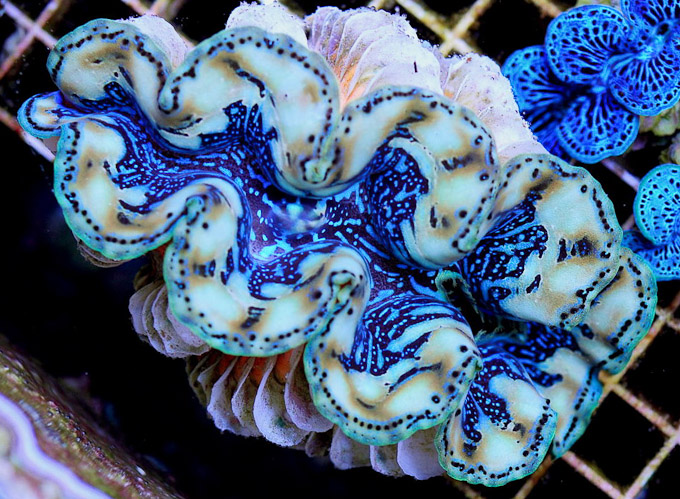Giant clams are full of surprises – not only are they very well adapted to high levels of sunlight on the reef but it seems out they might have some tricks that we can tap into ourselves. Anyone who’s ever looked down upon the mantle of any number of giant clam species has no doubt been amazed by their wonderful colors and unique patterns.
It turns out that this mantle is riddled with light channeling organs that help to deliver the right wavelengths of light to algae deep inside the clams tissues. The bight blue ‘iridocytes’ in particular usually look blue because they diffuse more photosynthetically usable wavelengths of light to their symbiotic algae for maximum efficiency.

Researchers at the University of Pennsylvania have been studying Tridacna clams to figure out how they optimize the absorption of light and are attempting to recreate these techniques for use in biofuels. In theory it should be very simple to create a carbon-neutral energy future using phytoplankton but every time these kinds of projects get scaled up they fail to meet projected output.
But by mimicking the light dispersing organs of giant clams, using nano particles and special mixing techniques, researchers have been able to increase the amount of light reaching each cell of the microalgae that serves as the feedstock for biofuel. It’s no secret that giant clams are masters at making the most out of bright light to fuel their growth but now they are teaching us these same tricks to help fuel our modern world as well. [New Atlas]



